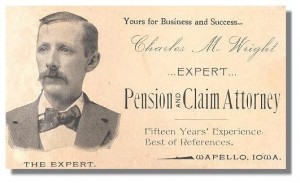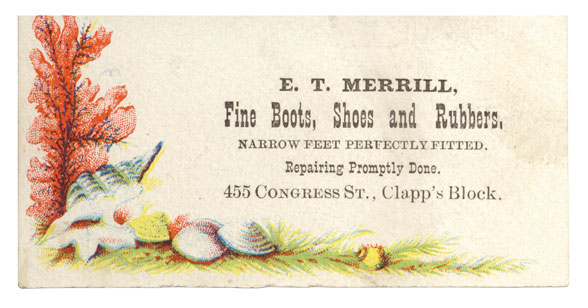In the early part of the 19th Century in the Victorian era another tradition arose very quickly on the scene, that of the ritual society which had formed a way of contact for their small Victorian circles – the leaving of Calling Cards or business cards. This ingenious way of leaving cards formed part of a social etiquette which ranged in separate meanings. They were an imperative part of introductions, invitations and welcomed visits.

In the Victorian era, business cards and calling cards were used by every lady and gentleman of means, and the intricate courtesies of how and when to leave cards was a facet of Victorian social life and etiquette. Everything about a card carried a meaning, from its design and motifs to a turned-down corner or black border. Cards could be colorful or plain, with lovely calligraphy or printing.
Some cards had the name hidden in the design or behind a colorful decorative front card. Some cards were black and white lithographs with the color added by hand, but others were done in Chromolithography, which used a different plate for each color, resulting in a richly colored and detailed card. Most cards i.e. calling cards unlike the business cards carried only the name of the person, as it was a token of a personal visit, not an item to be referred to later for information.
Social customs are essential in developing friendships and it was important in society to pay frequent calls and to return calls promptly for social as well as business purposes. Ladies cards were often elaborately decorated with a gilded, pierced, scalloped edge. Ladies’ cards might be glazed, men’s were not. Men’s were more straightforward and of a business nature. Men often wrote their street and numbers; women did not. A black border on the card meant the person was in mourning.

Children also purchased calling cards and exchanged them in imitation of grownups. Servants would carry the caller’s card (on a tray) to the master or mistress of the house and the visitor may or may not be received. Cards were left at a person’s house whether or not the person was at home. Visits were brief, thirty minutes or less, and unpleasant topics were never to be discussed. It was considered courteous to leave within a few minutes if another caller arrived unless invited for tea or luncheon.
This tradition of calling cards and business cards has gained enormous importance and is used worldwide as a mode of communication and otherwise.
This age-old tradition of calling and business cards of the Victorian era reflects the sophistication and style of the people of that period. The style here refers to the presentation of the calling card and the business cards. The Victorian era is rightly called the era of elegance. This mode of communication will probably never fade away.
Victorian Costermongers: Insight into the street vendors of the Victorian era.